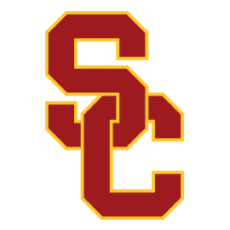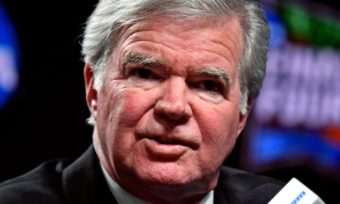NCAA’s Mark Emmert says fall sports likely a no-go if campuses aren’t open
In an interview shown on the NCAA’s official Twitter account Friday night, Emmert said he has spoken to hundreds of presidents and commissioners in recent weeks and he believes there is consensus among them.
“All of the commissioners and every president that I’ve talked to is in clear agreement: If you don’t have students on campus, you don’t have student-athletes on campus,” Emmert said. “That doesn’t mean [the school] has to be up and running in the full normal model, but you have to treat the health and well-being of the athletes at least as much as the regular students. … If a school doesn’t reopen, then they’re not going to be playing sports. It’s really that simple.”
Emmert said he believes final decisions about fall sports resuming amid a coronavirus pandemic could come sometime next month.
“I suspect that people are going to have to make decisions sometime in June,” Emmert said. “Maybe by the Fourth of July.”
While major conference commissioners have pushed for schools and the athletic programs attached to them to start at the same time, Emmert said that’s unlikely. He said schools, based on institutional and local regulations, likely will open at different times with different models, potentially with students on-campus or off-campus, for each university.
“It’s unlikely everyone is in the same situation,” he said.
Emmert said multiple conference commissioners, school presidents and athletic directors have had conversations about the various scenarios that could unfold in the coming months. As a result, he said, there have been conversations about “relaxing” typical regulations such as the number of games or the rules governing how often opponents can play one another in the same season.
“Let’s keep our priorities in place and recognize this is going to be a very unusual school year, and we just have to make the best of it,” he said.
Dr. Brian Hainline, the NCAA’s chief medical officer who also participated in the conversation on Friday night, added that improved coronavirus testing and tracing are key components going forward.
“What does testing really mean and how often does it have to be done, especially if you’re in a contact sport and the athletes are close to each other?” he said.
But there is hope. Emmert said a “phased” approach could potentially lead to the gradual return of fans, assuming those decisions align with local, state and federal regulations.
“Just because there’s some regulation that’s been lifted doesn’t mean that automatically means you should immediately put 105,000 fans in a football stadium,” Emmert said. “I think that the proper thing to do and the sensible thing to do is a phased approach. It’s plausible to me that early in the season, let’s just stick with football, you see a very limited fan access, but by later in the season, as things develop, hopefully in a very positive way, you all of sudden can see larger fan bases attending.”
But Emmert also said that’s an optimistic perspective. There are scenarios that worry him and other college sports power brokers, scenarios they’re not sure how they’ll address if there is an outbreak during the season.
“The other scenario that we all are nervous about but we certainly have to think through is what if we have an outbreak?” he said. “What if there is a flare-up in a community on a campus? What do we do then? How does the campus handle it? How does the fan base handle it? What do you do with your student-athletes? We’ve got just a little bit of time to think through all of those scenarios. Because that, too, is certainly plausible with 11,000 NCAA schools, 19,000 teams, half-million student-athletes. The arithmetic is not in your favor if you think you’re not going to have any outbreaks in that cohort. We’re working through all of these scenarios.”
__________
TrojanDailyBlog members — Always feel free to add information or topics to the TDB which don’t necessarily pertain to any particular moderator post or member comment.

